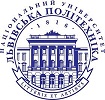
At the beginning of the 13th century, as the records of the „Galician-Volyn chronicle“ write, Busk belonged to the Galician, then Galician-Volyn principality. What happened to Busk during the Tatar-Mongol invasion (1237–1242) is not mentioned in chronicles, but it is assumed that the city was completely destroyed, because it was not mentioned for more than a century.
At the beginning of the 15th century Busk became an important trade and craft center of Poland. In 1411, being the property of the Mazovian prince Zemovit, the city received Magdeburg Right, which contributed to its intensive development.
The coat of arms of the city has become an integral attribute of the city government. It depicts a lizard (stork) standing on one leg. The image of buzz on the coat of arms is not accidental. In the suburbs of Busk, located in a swampy area with many rivers, this bird was the most common, and therefore became a symbol of the city.
During the 15th-17th centuries the city became the prey of Tatar raids, but after every destruction it was quickly revived. Favorable geographical location contributed a lot to this. Through the Bug, and then the Vistula, Busk had access to the Baltic coast. There was a lively trade, developed production in the city. In the 16th century, the city had four water mills, one of which had a loom.
In 1539-1541 the first paper mill in Ukraine appeared in Busk. In 1581, a masterpiece of Ukrainian book printing - the Ostroh Bible by Ivan Fedorov (~1510-1583) - was published on paper produced in Busk. This paper shop operated until 1788.
Historical documents record the presence of the oldest professional associations of craftsmen in Ukraine in the city. In 1476 there were shops of butchers, weavers, later founded furriers and tailors, in 1578 a workshop of brewers (six masters). There were also shops of painters and goldsmiths.
At the beginning of the 17th century Busk was one of the largest cities in the province. A large number of rivers, ditches and swampy lowlands made it difficult to connect between parts of the city and at the same time gave a unique look to Busk. Many bridges were built over water obstacles, the number of which - more than 50 - Busk had no equal in Galicia, so since ancient times it was called „Galician Venice“.
In 1722 Busk came under Austrian rule. At the end of the 18th century it became a secondary provincial town. Due to historical and economic processes, Busk found itself on the sidelines of industrial development, so it did not rise to the level of not only large but also medium-sized cities.
A number of historical events and names of prominent public, political and cultural figures of Ukraine are connected with Busk. The President of the Western Ukrainian People's Republic Yevhen Petrushevych (1863-1940) and the prominent Ukrainian philologist, ethnography and art critic Ilarion Sventsitsky (1863-1956) were born here. The founder of the new Ukrainian literature in Western Ukraine, the outstanding poet Markiyan Shashkevych (1811-1843) lived and worked in Busk. His colleague Ivan Vahylevych (1811-1865), a colleague of the Russian Trinity group and a writer and folklorist, collected folklore materials here. In the 1930’s Lev Chachkovsky, a great admirer of Ukrainian antiquity and a researcher of princely cities, conducted his historical and archeological research.
To date, a number of architectural and cultural monuments of national importance have been preserved in Busk. Among them are monuments of wooden architecture of the 17th century like the Church of St. Onuphrius and St. Paraskeva. From the 19th century date the palace of Count Badeni, the park-monument of garden and park construction as well as the historic buildings of Square Market.
(Tetiana Zhovtanetska, Lviv Polytechnic National University, 2022)